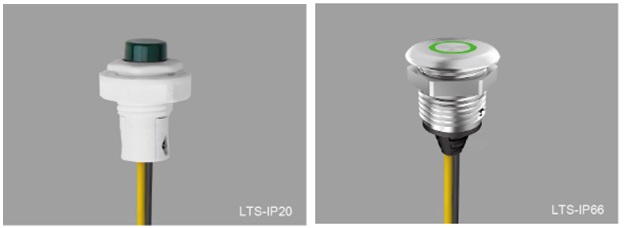Emergency Lighting systems play a critical role in various sectors such as buildings, and industries. As the application areas continue to expand, the high maintenance costs have become one of the major challenges faced today. This issue becomes even more prominent in regions like Europe and America, where the cost of maintenance technicians is higher. Consequently, an increasing number of brands in the industry have incorporated the Auto Test function or Self-Test function into their LED emergency equipment. The aim is to reduce the costs associated with system maintenance in the long run.
As a company specializing in the field of emergency lighting for nearly 20 years, Phenix Lighting has always prioritized the exploration of product details to provide the utmost user experience. Therefore, from the early stages of product development, Phenix Lighting has set stringent requirements for the Auto Test feature in their LED Emergency Driver series and Lighting Inverter series, So, what exactly does the Auto Test function entail in Phenix Lighting’s product lineup? This article will take Linear LED Emergency driver 18490X-X series of Phenix Lighting as an example to make a detailed introduction to this:
1. Initial Auto Test:
When the system is connected properly and powered on, the 18490X-X will perform an initial Auto Test. If any abnormal conditions exist, the LTS will blink quickly. Once the abnormal condition is corrected, the LTS will function correctly.
2. Preprogrammed Scheduled Auto Test:
1) Monthly Auto Test
The unit will conduct the first Monthly Auto Test after 24 hours and up to 7 days after initial power on.
Then monthly tests will be performed every 30 days, and will test:
Normal to emergency transfer function, emergency, charging and discharging conditions are normal.
Monthly test time is approximately 30~60 seconds.
2) Annual Auto test
Annual Auto Test will occur every 52 weeks after the initial 24 hours full charge, and will test:
Proper initial battery voltage, 90-minute emergency operation and acceptable battery voltage at the end of the full 90-minute test.
If the Auto Test is interrupted by a power failure, a full 90-minute Auto Test will occur again 24 hours after the power is restored. If the power failure causes the battery to fully discharge, the product will restart the Initial Auto Test and Preprogrammed Scheduled Auto Test.
3. MANUAL TEST:
Phenix Lighting’s various series of emergency modules also feature manual testing compatibility. This functionality is primarily achieved by pressing the LTS (LED Test Switch) in normal mode:
1) Press the LTS one time to simulate the emergency detection for 10 seconds. After 10 seconds, the system automatically returns to the normal mode emergency mode.
2) Press the LTS 2 times continuously within 3 seconds to force a 60-second monthly emergency test. After 60 seconds, it will automatically return to normal mode. After the test is completed, the next monthly test (30 days later) will count from this date.
3) Press the LTS 3 times continuously within 3 seconds to force an annual test with a duration of at least 90 minutes. After the test is completed, the next (52-week) annual test will count from this date.
During any manual test, press and hold the LTS for greater than 3 seconds to terminate a manual test. The Preprogrammed Scheduled Auto Test time will not change.
The testing devices integrated in certain LED Emergency Drivers commonly found in the market are equipped with two separate components: a test switch and a signal indicator light. However, these components are limited to basic functionalities, such as indicating normal lighting (battery charging), indicating emergency lighting (battery discharging), switching between normal lighting and emergency lighting modes, and signaling a warning in the event of a circuit failure.
The LED signal light and the test switch are separate from other manufacturers
The LED Test Switch (LTS) integrated into Phenix Lighting’s various LED emergency drivers and Lighting Inverters combines an LED signal lamp and a test switch. In addition to common functionalities, the LTS can also display more operational statuses of the emergency system. By giving the LTS different pressing instructions, functions such as battery disconnection, manual testing, and reset can be achieved. It can also accommodate other personalized requirements, such as emergency power and time switching, disabling or enabling automatic testing, and other intelligent features.
The IP20 and IP66 LED Test Switch from Phenix Lighting
Phenix Lighting’s LED Test Switch (LTS) is available in two waterproof ratings: IP20 and IP66. It offers flexible installation options and can be used with various types of fixtures, locations, and environments. Whether it is indoors or outdoors, the LTS ensures reliable performance. As a result, Phenix Lighting’s products are widely used in various fields such as wind power, maritime, industrial, and architectural lighting.
If you are in search of a suitable emergency lighting solution for your fixtures or projects, Phenix Lighting is your premier partner, offering the utmost professionalism and extensive expertise in product technology development.
Post time: Jul-07-2023


